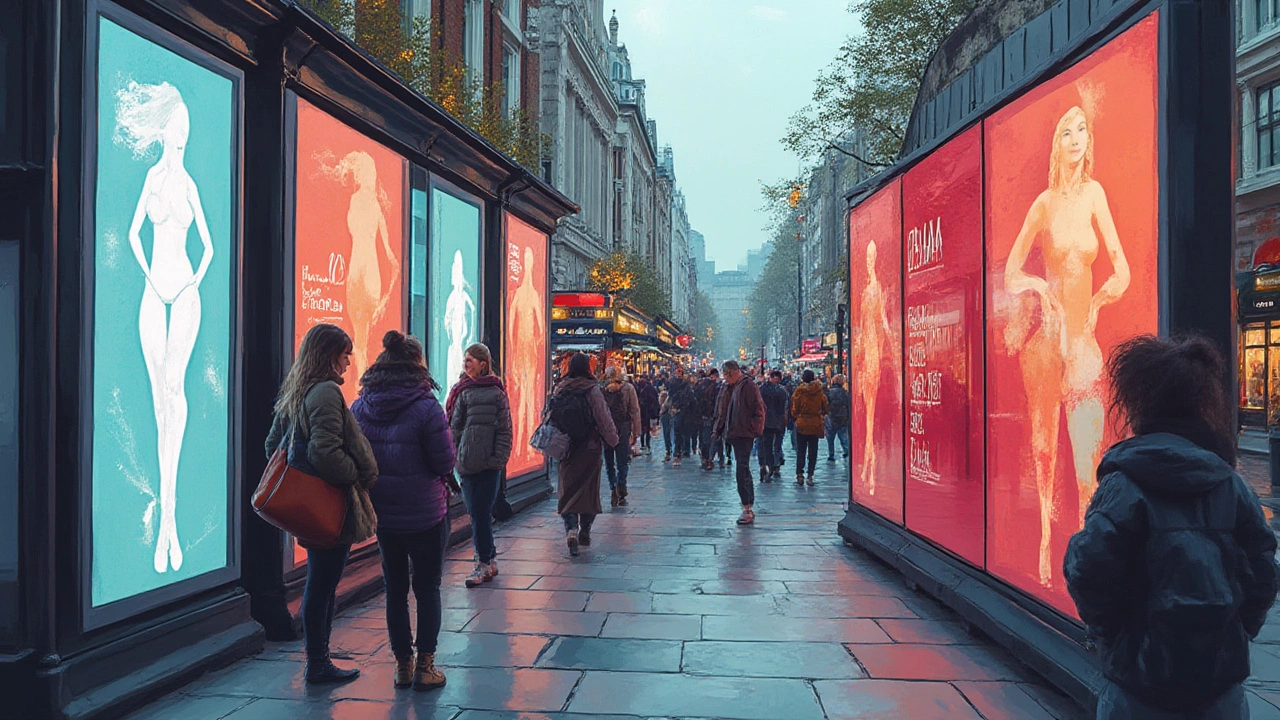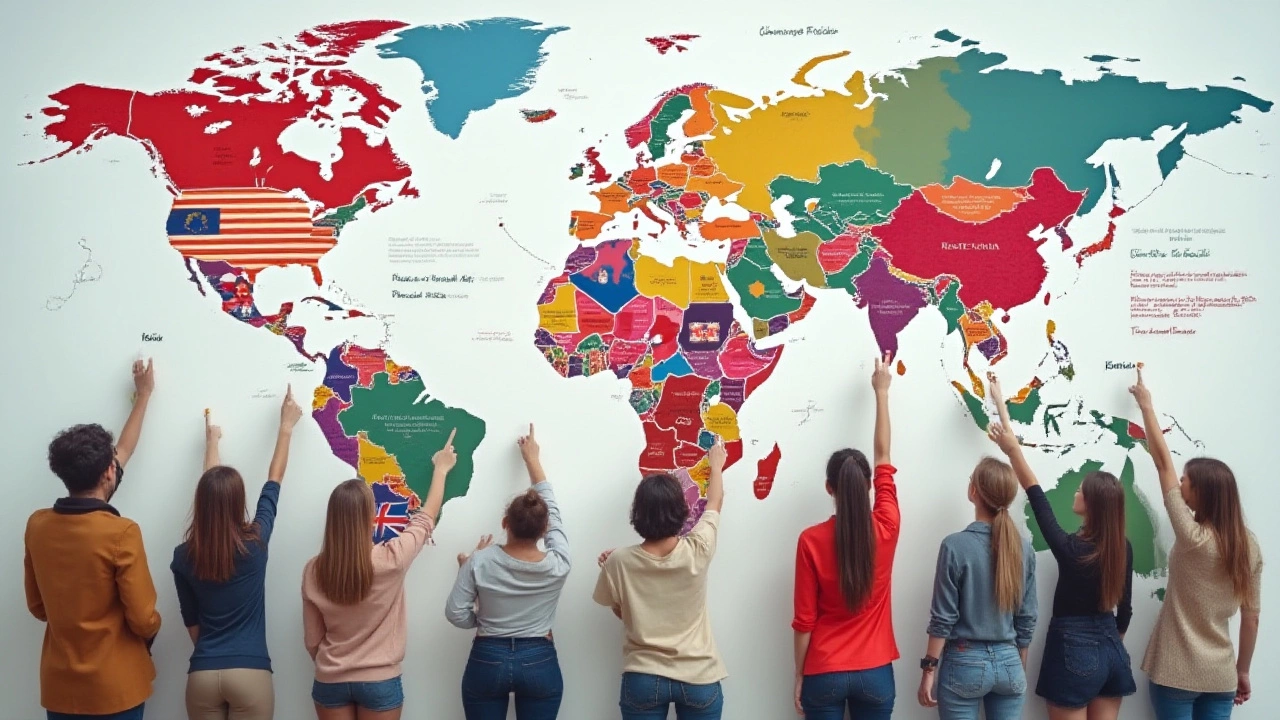If you could travel to any country for a beauty makeover, where would you go? Ask that question, and you'll find people rarely agree. Yet, when you dig into global stats about who gets the most plastic surgery, a handful of nations are way ahead of everyone else. People have some wild theories: maybe it’s the pressure from celebs, maybe social media fuels it, or maybe it’s just plain old curiosity about what’s possible these days. The truth is, looking at national trends in plastic surgery says a lot about how we see beauty—and about what people are willing to invest in themselves to feel more comfortable in their skin.
The Global Champions of Plastic Surgery: Which Countries Lead the Pack?
Start with a simple fact: nobody gets more cosmetic work done than the people living in the United States, Brazil, and South Korea. Every year, the International Society of Aesthetic Plastic Surgery (ISAPS) tracks surgical and non-surgical procedures around the world. In their 2023 report—which covers millions of treatments from rhinoplasties to butt lifts—the USA claimed the top spot with about 4.3 million surgeries. Brazil followed with over 2.5 million, and South Korea trailed slightly behind. What's behind these numbers? In the US, there’s a culture of self-transformation and a massive private healthcare system to support it. Brazil famously celebrates curves, beach bodies, and injects plastic surgery into its pop culture. In South Korea, the ideal of a V-shaped jaw, double eyelids, and a delicate nose is so mainstream that some high school graduates receive surgery as a gift before college.
Here’s an interesting breakdown in table form for the top countries by number of procedures (data: ISAPS 2023):
| Country | Total Procedures (2023) | Most Common Procedure |
|---|---|---|
| United States | 4,350,000 | Breast Augmentation |
| Brazil | 2,530,000 | Liposuction |
| South Korea | 1,430,000 | Blepharoplasty (Eyelid Surgery) |
| Mexico | 1,220,000 | Liposuction |
| Japan | 878,000 | Rhinoplasty |
The numbers only tell part of the story. What drives this demand isn’t only access to skilled surgeons. It’s also about how much a society prizes or even normalizes physical perfection. In South Korea, beauty standards are unrelenting, with K-pop stars setting trends. Brazilians see cosmetic work as an extension of regular self-care, and Americans have the biggest medical aesthetics market in the world. This race for perfection is only picking up steam, too, as non-invasive techniques and recovery times get shorter.
Why Are Some Nationalities More Obsessed with Cosmetic Procedures Than Others?
Imagine chatting with friends in Seoul about a celebrity’s flawless look—it’s not strange to hear them mention a favorite surgeon. In Brazil, lunchtime “lunchtime lifts” (quick, low-downtime procedures) have become as socially acceptable as skipping off work for a dentist appointment. And over in Los Angeles or Miami, plastic surgery clinics are sometimes as jam-packed as coffee shops. But why?
The answer sits in history, society, and a country’s relationship to image. South Korea, after the 1990s economic boom, saw plastic surgery as a tool for social climbing and better job prospects. A striking stat: one in three young South Korean women in Seoul is estimated to have had at least one cosmetic procedure before age 30, often with family support. Brazil’s long beach seasons and “body culture” make body confidence a sort of national pride. Meanwhile, Americans have learned to treat cosmetic work as another kind of self-improvement, whether it's about recovery after childbirth, anti-aging, or pure aesthetics.
Privacy and discretion also play a role. In countries where there’s less stigma, people are a lot more open about getting work done and sharing results. When Kylie Jenner admitted to lip fillers, American clinics saw a 25% spike in appointment requests for similar procedures. Social media amplifies everything—filters and photo-editing apps have blurred the line between filtered perfection and real life. If everyone on your timeline seems “touched up,” a little tweak here and there can start feeling like no big deal.

Top Plastic Surgery Procedures: What Are People Actually Getting Done?
So what are the world’s favorite fixes? It’s not all about breast implants or nose jobs. Globally, the most popular surgical procedures in 2023 included breast augmentation, liposuction, eyelid surgery (blepharoplasty), tummy tucks (abdominoplasty), and rhinoplasty (nose jobs). Each country has its own favorites, shaped by local beauty ideals and trends:
- Brazil: infamous for buttock augmentations, body contouring, and Vaser lipo (hi-def sculpting for abs and arms)
- United States: breast augmentations still dominate, closely followed by liposuction and a surge in minimally invasive injectables (think Botox, fillers)
- South Korea: eyelid surgery, jawline contouring, and “Westernization” of features remain standard, with non-surgical shaping like jaw slimming injections growing fast
- Mexico and Turkey: Both countries are hotspots for medical tourism, offering tummy tucks, hair transplants, and top-tier dental makeovers at lower prices
Many clinics have begun to offer “lifestyle packages” that include accommodations, post-op care, and even city tours—because patients increasingly travel for cosmetic work, looking to bundle beauty with a little adventure. Here are a few more interesting facts:
- Fat grafting (where fat from one part of your body is moved to another, often to plump lips or cheeks) doubled from 2020 to 2024, thanks to more natural-looking results
- Men make up about 14% of cosmetic surgery patients in the US—think eyelid sculpting and jaw definition, not just hair plugs
- Tech professionals in Silicon Valley and Seoul are now among the fastest-rising groups seeking subtle facial tweaks to “look more trustworthy” in online meetings
Plastic Surgery Culture Shock: How Trends Spread and Why Tourists Flock Overseas
Do you remember the first time you saw a “before and after” that made your jaw drop? It’s not just you—travelers from Northern Europe, Australia, and the Middle East are jetting worldwide to chase that same wow factor. Medical tourism in cosmetic surgery is booming, with more than 14 million people flying internationally for beauty treatments every year. Mexico, Turkey, and Thailand are leading destinations, offering everything from luxury clinics to quick-fix ‘weekend makeovers’ at half the cost you'd pay at home.
But it’s not just about saving money. In Brazil, people sometimes treat plastic surgery as a rite of passage. K-pop fans may visit South Korea to get the ‘idol look.’ There’s even a trend of Russian, Italian, and British patients traveling to Turkey for ‘Hollywood smiles’—smile makeovers with veneers and whitening packed into all-inclusive travel deals. Some clinics in Istanbul now get more foreign than local patients.
Curious about patient tips? Here’s what people often forget to consider:
- Different countries have different regulations, so always check a clinic’s certifications. ISAPS accreditation is a good sign.
- Laws about operating rooms, anesthesia, and infection control vary widely. A flashy Instagram feed doesn’t guarantee quality care.
- Traveling patients often underestimate recovery time. Swelling, bruising, and even minor complications can mess with travel plans or even ruin a holiday if you’re not careful.
- Language barriers are surprisingly common. Make sure your surgeon speaks your language (or brings a good translator) so you know what you’re signing up for.
Something else: post-op care matters. If you’re combining surgery with sightseeing, think twice—wandering cobbled streets right after a tummy tuck is nobody’s idea of a good time. And, if you ever see package deals promising ‘miracle change in three days’… run a mile.

Future of Cosmetic Surgery: Where Are We Headed Next?
The hunger for cosmetic change is only growing, but the big shifts are happening in how people approach it. What’s hot now? Minimally invasive fixes, shorter recovery, and results that look like Mother Nature just did you a favor. Injectable fillers, fat grafts, thread lifts, and skin tightening devices are outpacing traditional lifts and implants among the under-40 set. More men, non-binary folks, and elders are joining in. Even among teens and twentysomethings, there’s a drive for “prejuvenation”—preventing wrinkles and sag before they even start.
Sustainability is entering the chat, too. Younger generations want transparency: Are products used in fillers cruelty-free? Are anesthesia gases eco-friendly? Clinics everywhere, from London to Seoul, are sprucing up their green credentials in response. Another twist: as more countries move towards regulation, it’s getting harder for shady practitioners to slip through the cracks. The biggest advice doctors give—don’t skimp on research or rush into a procedure under peer (or social media) pressure. “Ethical surgery” and mental health screenings are getting more standard. If a surgeon doesn’t talk about psychological readiness, they’re behind the times.
Even so, the cultural differences in cosmetic surgery are likely here to stay. What seems outrageous in Dublin might be totally tame in Rio or Seoul. Whether you’re considering a tiny tweak or just love watching dramatic before-and-afters on TikTok, the world map of beauty is only getting more colourful—and more connected. Everyone thinks their look is “natural” until a trend sweeps in to change the game.




